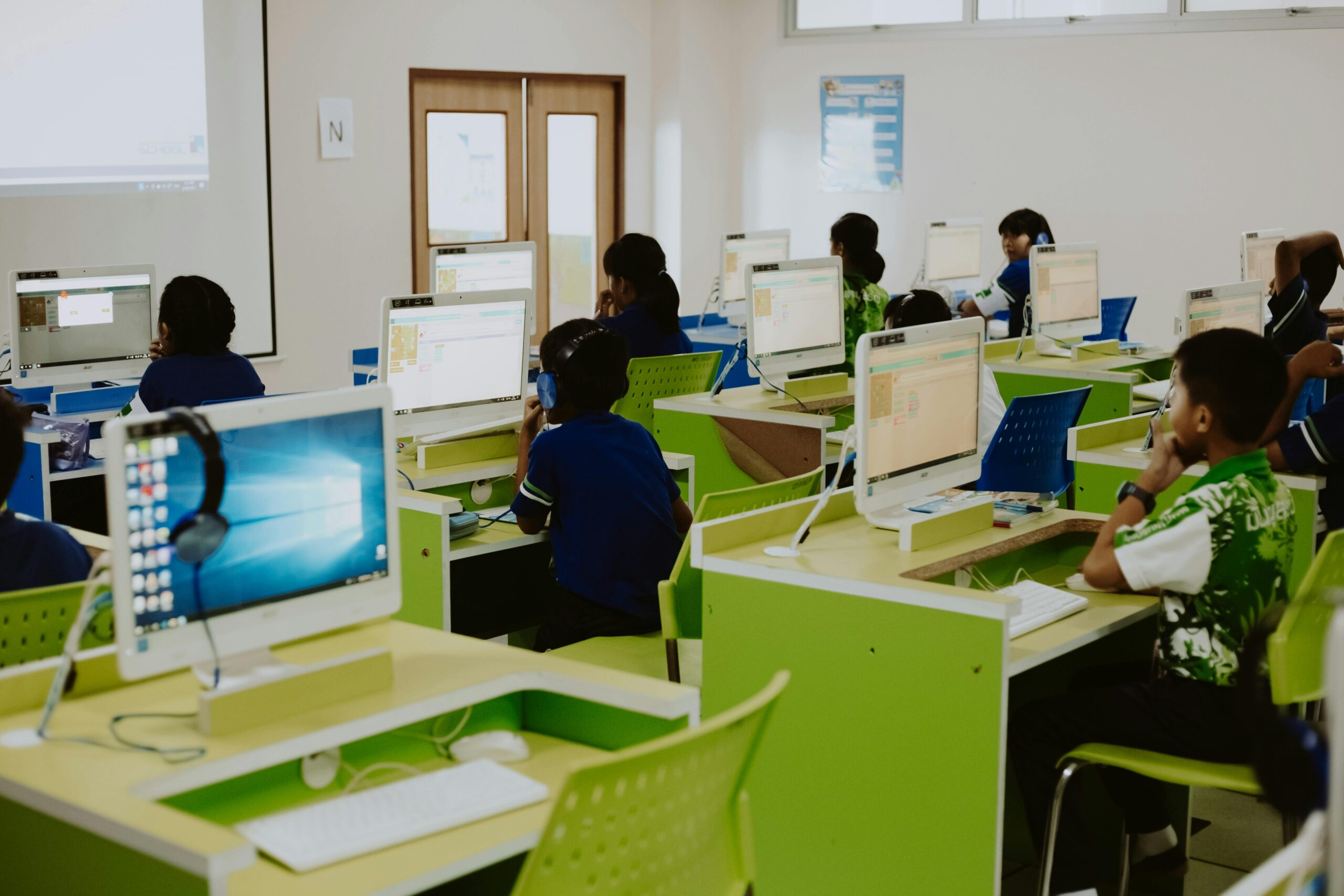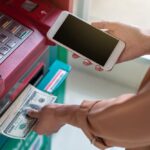This blog post explores five practical resources you can use to help newcomers access affordable internet. The blog covers a range of solutions, from leveraging community resources to navigating offers from internet service providers.
For newcomers to the U.S., having affordable internet is crucial—for everything from job searches to educational opportunities, from staying connected with loved ones to accessing essential services.
But while there has been progress towards the goal of equitable internet access for all, recent changes have created new challenges. The Affordable Connectivity Program (ACP), which previously provided a discount on monthly internet access for eligible households, has lapsed as of June 2024 due to a lack of federally-approved funds. Meanwhile, the National Telecommunications and Information Administration (NTIA)—an advisory agency of the U.S. Department of Commerce—has accepted digital equity plans from all 50 states, D.C., and Puerto Rico. But the implementation and distribution of its $42.45 billion in funding is still in process.
While we wait for this program to possibly renew in January 2025, and for other programs like Broadband Equity Access and Deployment (BEAD) to get approved to distribute funds at local levels, service providers must play a vital role in helping clients navigate shifts in the digital landscape.
However, there is still good news: many options and resources are still available to help clients get online affordably. Below, we will outline some of those resources, offering guidance on how to leverage public, private, and nonprofit programs to newcomer clients’ advantage.
Resources for Securing No-Cost or Low-Cost Internet
There are several organizations with programs that focus on helping people get access to no-cost or low-cost Wi–Fi. By getting familiar with community anchor institutions like public libraries, community centers, nonprofits, and schools, as well as with regional internet service providers (ISPs), you can offer clients short–term options until federal funding programs get renewed.
- Public Libraries: Most public libraries provide free internet access. They also typically offer desktop computers, making them an invaluable community resource for clients without their own personal devices. Many also offer digital literacy programs and assistance, as well as essential services like printing, scanning, and sometimes professional and/or education counseling. Locate your public library at Libraries USA.
- Community Centers: Many community centers, including those run by local governments or religious organizations, may offer free or low-cost internet access. They often provide computers, Wi-Fi, and even educational programs related to digital skills. Although no national locator is available, most states have a simple way to locate a center near you, such as this website for the state of Wisconsin: Community Centers Milwaukee. Alternatively, try searching “community centers near me” on your preferred search engine to get started.
- Nonprofit Organizations: Many nonprofits, such as Everyone On, partner with ISPs to offer reduced-cost internet options. To identify affordable internet, devices, and digital skill trainings by zip code, start by using Everyone On’s national locator tool. There are only three steps to the process: 1. Visit the Offer Locator Tool; 2. Enter your zip code; and 3. Choose the low-cost internet option that best matches your needs. Other organizations, like PCs for People, also provide affordable refurbished computers alongside affordable internet and digital literacy support.
- Schools and Educational Institutions: Students, and sometimes their families or even other community members, can often access the internet through after-school programs and other initiatives, such as community Wi-Fi hotspots. Check with school administrators, such as a principal or a counselor, about steps to enroll.
- Internet Service Providers (ISPs): ISPs sometimes offer their own programs aimed at providing affordable internet access to low-income households. Switchboard does not endorse any individual product or for-profit corporation but provides an overview of some of the most notable programs below:
AT&T Access
- Description: Offers low-cost home internet service for $30 per month, with no deposit, installation fee, or annual contract, plus discounted computers for program participants.
- Eligibility: Available to households that participate in the Supplemental Nutrition Assistance Program (SNAP) or National School Lunch Program (NSLP), or that receive Supplemental Security Income (SSI).
- Enroll: AT&T Internet
CenturyLink Internet Basics
- Description: Provides internet service for $9.95 per month, plus taxes and fees, with no contract requirement and no installation or activation fees.
- Eligibility: Available to households that participate in SNAP or NSLP, or that receive SSI.
- Enroll: CenturyLink
Comcast Internet Essentials
- Description: Includes high-speed internet for $9.95 per month plus tax, access to discounted computers, and free digital literacy training.
- Eligibility: Available to households that participate in various government assistance programs, such as Medicaid, SNAP, or U.S. Department of Housing and Urban Development (HUD) housing assistance; also available to households with children eligible for NSLP.
- Enroll: Internet Essentials
Mediacom
- Description: Offers 100/20 Mbps service for $28.99 plus taxes and regulatory fees.
- Eligibility: Available to households that participate in SNAP; Medicaid; WIC; SSI; Housing Choice Voucher; Project-Based Rental Assistance; Public Housing; Affordable Housing Programs for American Indians, Alaska Natives, or Native Hawaiians; Veterans Pension and Survivors Benefit; NSLP or School Breakfast Program, including at U.S. Department of Agriculture (USDA) Community Eligibility Provision schools; Federal Pell Grants in the current award year; Tribal Assistance Programs; and the Lifeline Program administered by the Universal Services Administrative Company (USAC).
- Enroll: Mediacom’s Xtream Connect
Optimum Advantage Internet
- Description: Offers internet service for $14.99 per month, with no contract requirement, no data caps, and a free modem.
- Eligibility: Available to households that qualify for NSLP or SSI.
- Enroll: Optimum Advantage
Spectrum Internet Assist
- Description: Provides internet service for $17.99 per month with no data caps and a free modem.
- Eligibility: Available to households that participate in NSLP or the Community Eligibility Provision (CEP) of NSLP.
- Enroll: Internet Assist
Verizon Forward
- Description: Offers plan at $20 per month for qualifying applicants, with a $99 setup charge, plus the first six months free for brand new Verizon Forward enrollees.
- Eligibility: Available to households whose income is 135 percent or less of Federal Poverty Guidelines, or that use SNAP, Medicaid, or WIC; should enroll by September 3, 2024 deadline.
- Enroll: Verizon Forward
These programs can vary in availability, and specifics are based on each ISP’s location and offerings. Service providers should check with the ISP directly to confirm eligibility requirements and availability. Note that some programs may expire if and when ACP is renewed.
Additional resources include:
- National Digital Inclusion Alliance (NDIA) offers practitioner support, policy awareness, data, research, and an honor roll of low-cost internet plans. Be aware that some plans are location specific.
- Lifeline is a government program that began as a phone service for low-income Americans in 1985. It has evolved to include broadband access for $9.25 a month.
- HUD offers a digital inclusion program, ConnectHomeUSA, that also assists with affordable internet.
- Benton Institute offers resources on additional ISPs’ affordable internet programs.
We hope these resources can be a useful starting place for service providers looking to connect newcomer clients with essential digital services. While government assistance for low-income household internet can ebb and flow, there is always something we can do.
If you have specific questions or need additional guidance, submit a technical assistance request to Switchboard Technical Assistance.









